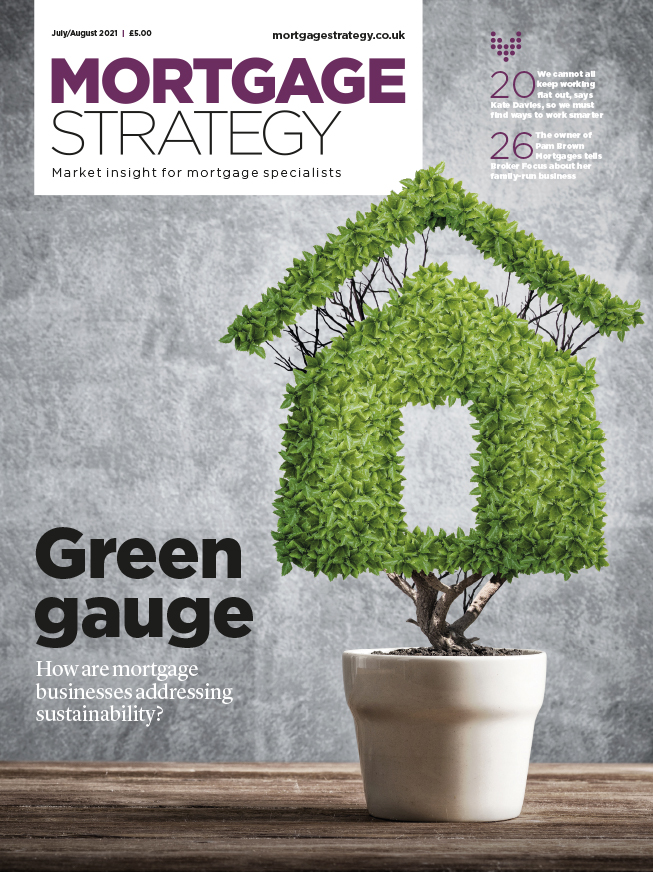
Caring about the future of the planet was once seen as the preserve of sandal-wearing hippies, but environmental concerns are now considered one of the biggest main-stream issues facing Britain.
A YouGov poll in June found that environmental problems ranked as one of the country’s top-three concerns, behind health and the economy and ahead of other major issues such as immigration and crime. Some 30% of people believe this is one of the three biggest problems facing the country, a figure that rises to 40% among the 18-to-24 age group.
Often the environmental debate is framed around polluting cars, international travel or heavy industry, but a major cause of pollution lies much closer to home. Residential properties are one of the biggest generators of pollution in Britain, but they are often overlooked when the national conversation turns to greenhouse emissions.
Millions of older homes in the UK have little in the way of ‘green’ provision. Many have old, energy-intensive boilers, no insulation and draughty windows. How can these homes be improved? So-called green mortgages have been launched by a handful of lenders but their popularity has yet to take off, so can green ever become mainstream?
Fad or future?
Figures published by the Business, Energy and Industrial Strategy Committee show that domestic properties account for 30% of Britain’s energy use and around 19% of greenhouse gas emissions. Much of this is due to the UK’s older, inefficient housing stock.
Upgrading Victorian properties may seem an impossible task but even very old buildings can improve their green status. As well as new insulation, a more efficient boiler and better-quality windows, even basic tricks like swapping to the most energy-efficient light bulbs and turning off unused appliances can reduce the carbon impact of a home.
For more substantial improvements, the new wave of green mortgages can provide a means for borrowers to enhance their properties. Lenders currently offering some form of green mortgage include Barclays, Nationwide and NatWest. However, there is some debate about what constitutes a green loan in the first place.
Green mortgage offerings are not always the cheapest or best solutions
Some lenders offer lower interest rates to environmentally friendly properties, aiming to change consumer behaviour by incentivising them to upgrade their homes of their own accord. Other providers offer grants to help increase the energy efficiency of existing housing stock, and specialist lender Ecology Building Society offers a renovation mortgage to help borrowers bring derelict properties back to life and make other substantial improvements to energy efficiency.
Financial analyst Moneyfacts says there are more than 100 green loans on the market but they are offered by only a handful of lenders. Rachel Springall, finance expert at the firm, says that, “despite the buzz, green mortgages remain rather niche”.
Although high-street names do offer green loans, there is little awareness of green mortgages among consumers. Springall believes the arrival of other, bigger players in the green mortgage arena could boost interest in the product.
“Green mortgages have become more desirable but they still remain rather a niche product in the mortgage market,” she explains. “However, lender optimism and the greater attention on energy efficiency could well entice other lenders to offer a similar approach.”
SPF Private Clients chief executive Mark Harris says it has been encouraging to see the arrival of bigger lenders in this space but few of his clients have asked for environmentally focused loans.
“Despite these innovations, there are still not many green mortgages,” he says.
Harris points to Kensington’s EKO cashback mortgage as an example of innovation in the sector. It offers cashback of up to £1,000 to borrowers who improve their home’s energy rating by a minimum of 10 points within 12 months. But he believes more needs to be done.
Despite the buzz, green mortgages remain rather niche
“Climate change is not new,” says Harris. “However, as its political profile rises and there is even greater consumer awareness surrounding the potential financial implications, green mortgages will take centre stage.”
Despite growing interest in green issues, consumer understanding of these mortgages remains low. Should brokers also share responsibility for the low uptake? While few clients ask for green mortgages, it is usually not an issue raised by brokers either.
The restrictions on green loans could be part of the problem. Harris says the current crop of green mortgages typically benefit new-build properties only. He believes the industry needs to offer more loans that reward homeowners who improve the energy efficiency of existing homes, and target those buying older properties.
Banks could also do more to improve consumer awareness. Harris argues the arrival of new lenders will enhance the attractiveness of green mortgages, but says significant drawbacks remain.
He adds: “Green mortgage product offerings are not always the cheapest or best solutions. There is also the issue that you may not always know the energy rating for the property you are buying.”
Rental rules
While many residential owners do not know the energy efficiency of their property, anyone involved in the rental market, whether a landlord or a tenant, will be more familiar with Energy Performance Certificates (EPC). Since 2008, all rental homes in England and Wales have been required to have a valid certificate, with the most environmentally efficient properties rated ‘A’ on a sliding scale that goes down to ‘G’ for the lowest-scoring homes.
New rules introduced in 2018 mean homes must achieve an ‘E’ rating to be legally let to tenants. Government proposals are likely to increase the threshold to ‘C’ for new tenancies by 2025, with the rules also applying to existing tenancies by 2028.
Paragon managing director Richard Rowntree says these rules have forced many landlords to upgrade their properties where otherwise they might not have done so. Such improvements can result in cheaper household bills for tenants, making properties more appealing to potential customers.
However, Rowntree says about half of the UK’s private rental homes were built before the Second World War, when less attention was paid to energy efficiency. These homes typically score much lower EPC ratings than newer properties.
By comparison, in the fourth quarter of 2020, 84% of new homes completed in England and 87% in Wales were awarded an ‘A’ or ‘B’ energy performance rating, based on expected fuel costs. In England, this figure represented a five percentage point increase on the previous three months.
Widespread retrofitting of energy-efficient upgrades is needed, and this comes at a cost
However, Rowntree says in older homes the design, materials and construction fall well short of the standards expected today.
“As a result, to reduce the amount of carbon we produce domestically, widespread retrofitting of energy-efficient upgrades is needed, and this comes at a cost,” he says.
Rather than leaving improvements until the 2025 deadline is upon us, landlords have been encouraged to transform their rental homes now. Paragon offers loans exclusively for properties rated ‘A’, ‘B’ or ‘C’, as do others in the sector.
Rowntree has urged other banks to follow suit. He says buy-to-let lenders can add a “layer of quality control where sustainability is considered as part of the underwriting and valuation process”, improving both the quality of the housing stock and the experience of the tenants.
Builders on board?
But what do the builders think? Although new-build homes are typically much more energy efficient than older housing stock, about 14% of new homes in England still score lower than an ‘A’ or ‘B’ on their EPC.
Redrow group sales director James Holmear says the growth of green mortgages will encourage more buyers to consider the environmental impact of their new property. He expects interest in these loans to increase over time.
“Green mortgages are still in their relative infancy but, as society as a whole becomes more environmentally conscious, there is nothing to suggest that they aren’t here to stay as first-time buyers and existing homeowners alike seek to make their homes as energy efficient as possible,” he says.
Redrow has recently partnered with Barclays and Virgin Money to launch green mortgages, but Holmear acknowledges that awareness among his customer base is low — something builders could also do more to address.
“There is still some consumer education to be done around the products themselves and the different types available,” he says.
“Clearly differentiating between those offered on new-build homes and those that offer cashback to upgrade existing properties would be useful from a consumer clarity perspective.”
The loans offered through Barclays and Virgin Money fall into the former category, Holmear adds, although mortgage savings and lower energy bills are not the only benefits offered by newly built properties. He says the carbon footprint of a new-build home is typically much smaller because these homes usually require no further work.
“New homes are ready to move into, negating the need for costly renovations,” says Holmear.
What will it take for green mortgages to become mainstream? As energy certificates are an abstract concept to many homeowners, perhaps more relatable or eye-catching products are the answer.
The difference between ‘A’-grade and less efficient properties could be displayed in pounds and pence, or the green element of the mortgage offer could be more straightforward.
Another lender, Keystone, plants a tree on behalf of each borrower who takes out a green mortgage — an easy-to-understand concept that has clear environmental benefits and consumer appeal.
MT Finance operations director James Anderson says the current efforts to drive energy efficiency and sustainability have not gone far enough.
“The initiatives so far, while welcome, are probably not radical enough to drive drastic change. But we are still at a very early stage, with lenders testing the appetite of the market for greener products and investment in sustainability.”
Appropriate incentives
Despite the relative lack of consumer interest, Anderson believes that, with the correct incentives, green mortgages can become a mainstream proposition.
“Although it is early days, we are likely to see much, much more being offered to borrowers who, like us, want to see sustainability being put at the heart of what we do with the built environment,” he says.
But the time for talking is over, and the industry agrees that action is urgently needed.
Rowntree says the moment for lenders to step up and take green loans seriously has now arrived.
“We all have a part to play in achieving the government’s target of reducing all greenhouse gas emissions to net zero by 2050, and this starts at home,” he says.
“Mortgage lenders have an important role here.”



